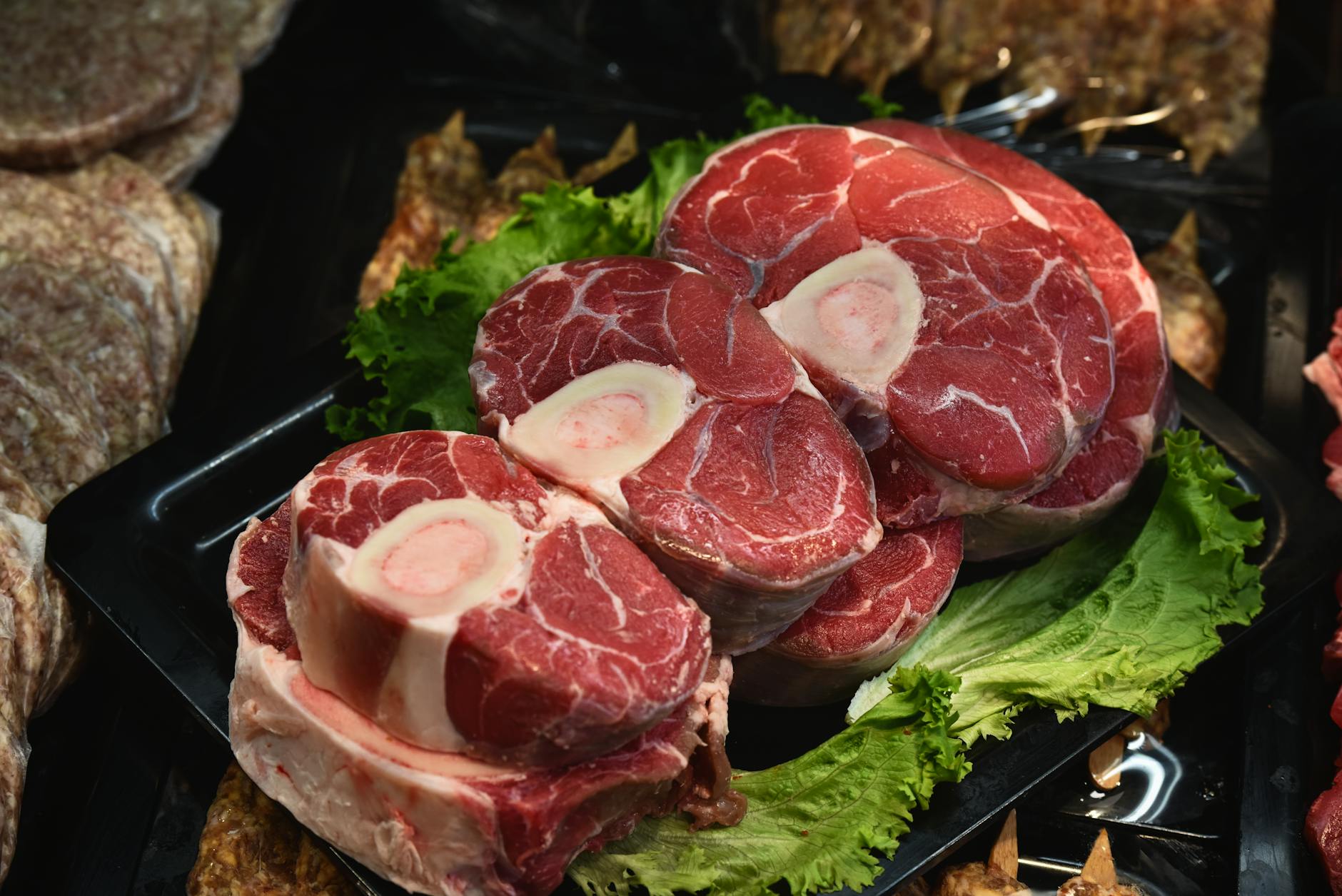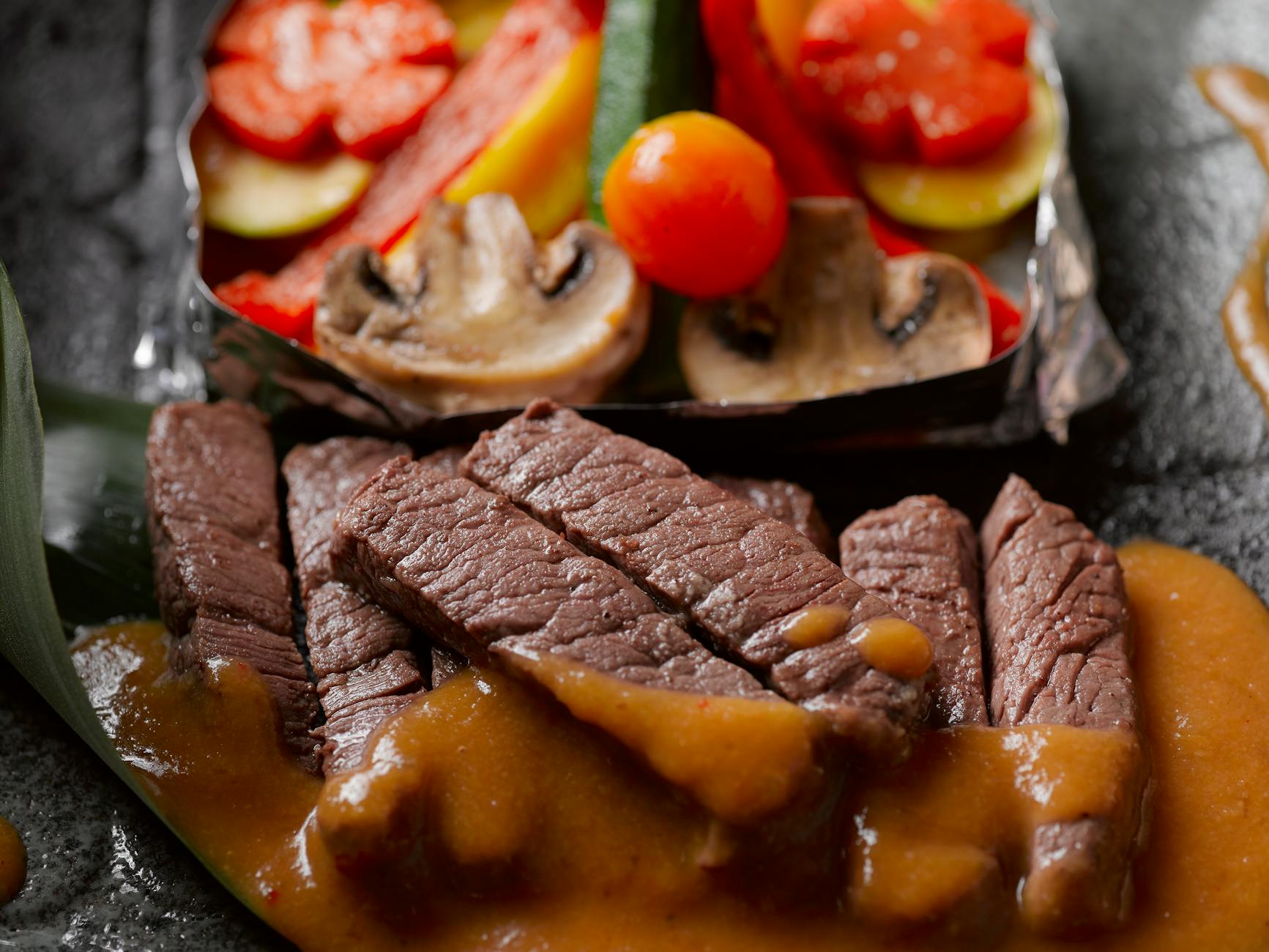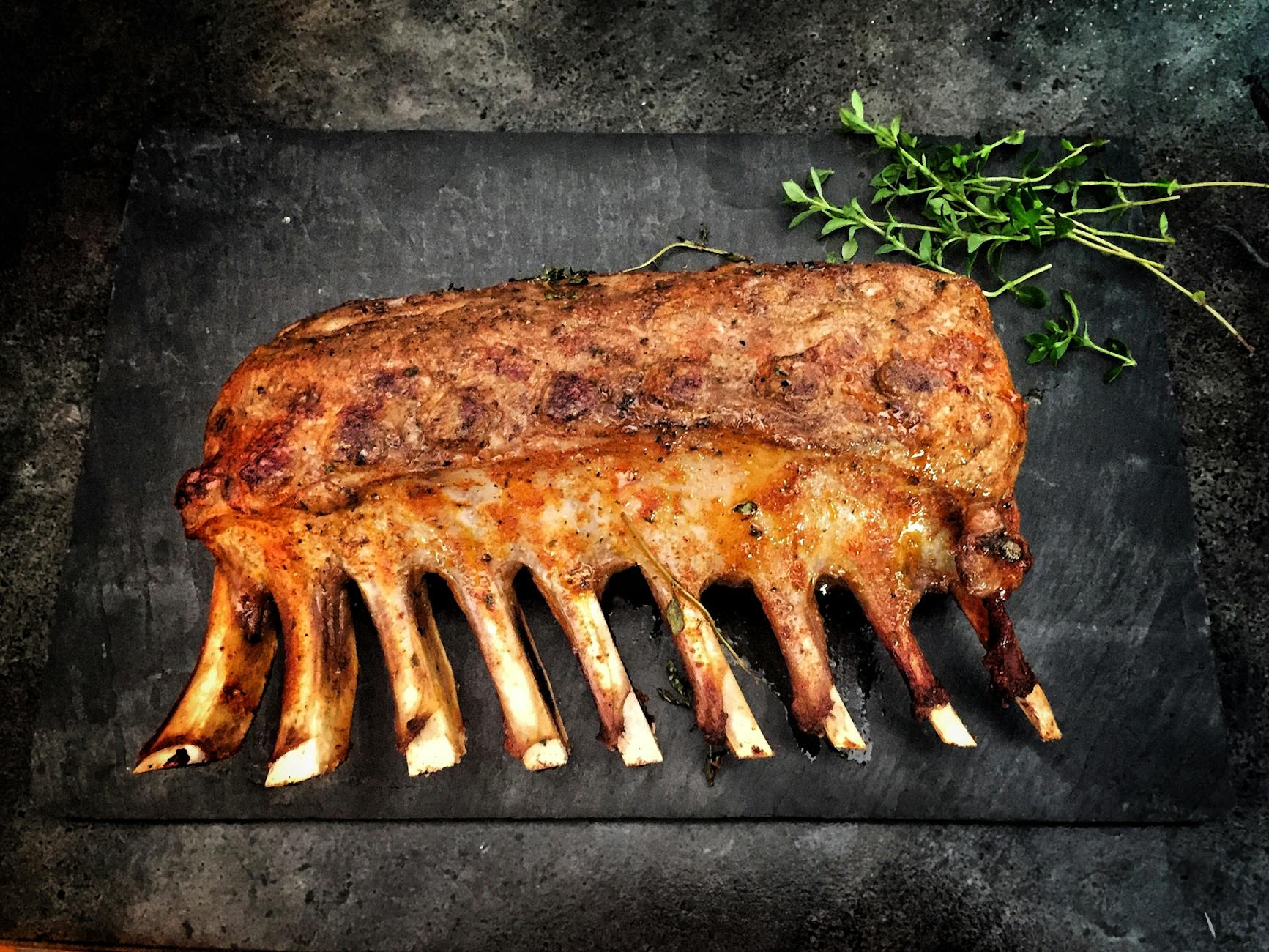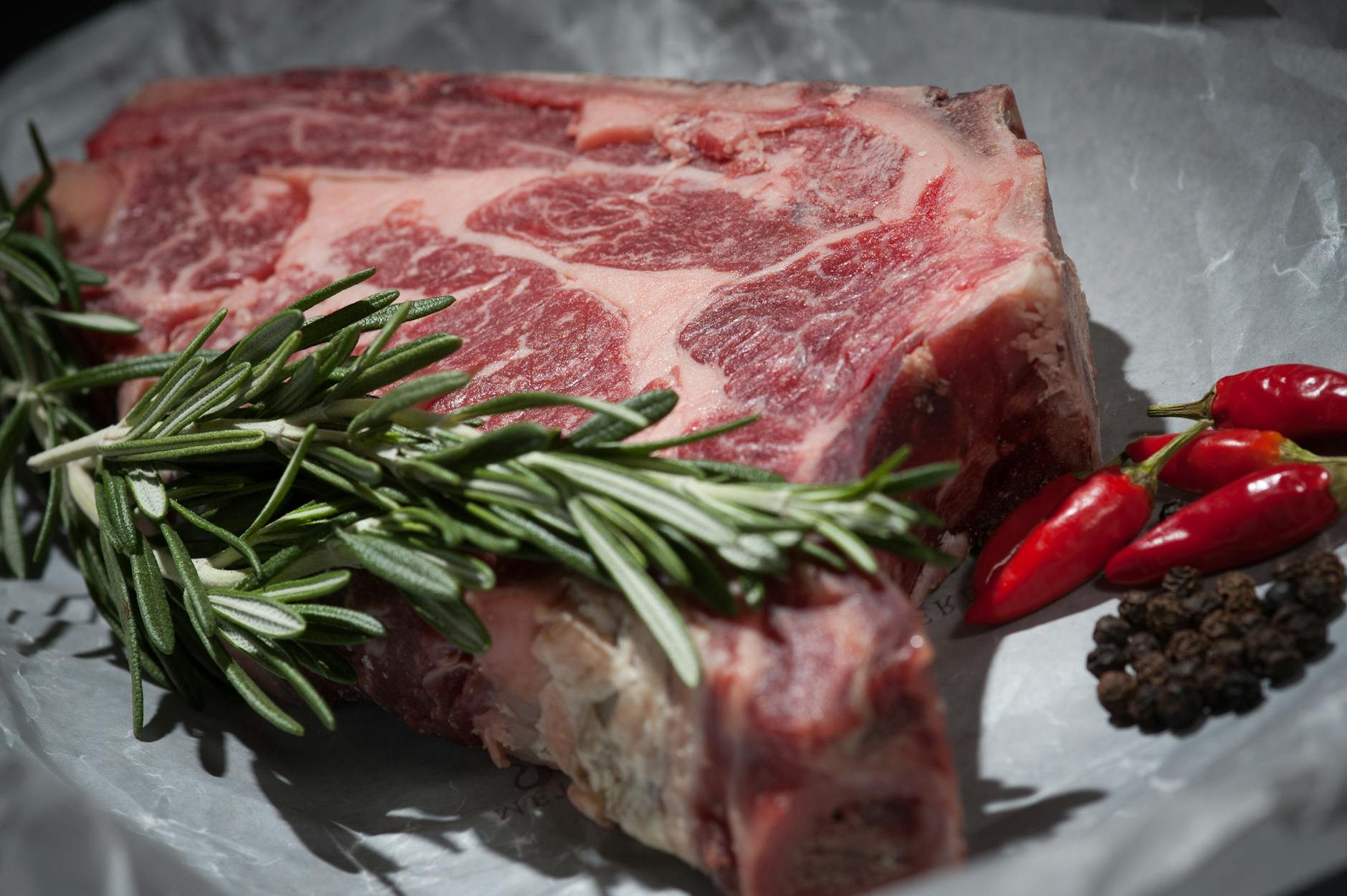When we think about beef and veal, it’s easy to picture sizzling steaks on a grill or a hearty stew simmering on the stove. But there’s a rich tapestry of history, culture, and science behind these meats that goes far beyond their place on our plates. Understanding beef and veal isn’t just about knowing different cuts or cooking techniques; it’s about appreciating the journey from pasture to table, recognizing the impact on our health and the environment, and exploring the myriad ways these meats have been woven into culinary traditions around the world.
Introduction to Beef and Veal
Beef and veal have been central to human diets for millennia, serving not just as sources of nourishment but also as cultural symbols and economic staples. Beef, derived from mature cattle, offers robust flavors and a variety of textures, making it a versatile ingredient in countless dishes. Veal, on the other hand, comes from younger calves and is prized for its tenderness and delicate taste.
Understanding these meats requires delving into the complexities of their production, the nuances of their culinary uses, and the implications of their consumption on health and the environment. By exploring beef and veal in depth, we can make more informed choices that satisfy our palates while aligning with our values.
The Journey from Pasture to Plate
The story of beef and veal begins long before it reaches the butcher’s shop or supermarket. It starts with the breeds of cattle, the environments they inhabit, and the methods by which they are raised.
Cattle Breeds and Their Characteristics
The diversity of cattle breeds around the world contributes to the wide range of beef and veal products available. Each breed has unique traits that influence the flavor, texture, and quality of the meat.
• Angus: Originating from Scotland, Angus cattle are renowned for their marbling—the intramuscular fat that enhances flavor and juiciness. This breed has become a favorite among steak enthusiasts.
• Hereford: With roots in England, Hereford cattle are known for their hardiness and adaptability. The meat is typically leaner, offering a different taste profile.
• Wagyu: Hailing from Japan, Wagyu cattle produce some of the most prized beef in the world. The intense marbling results in an unparalleled richness and tenderness.
• Charolais: A French breed, Charolais cattle yield meat that is lean yet flavorful, often used in gourmet cooking.
The choice of breed can significantly impact the dining experience, and many producers focus on specific breeds to cater to particular market demands.
Traditional and Modern Rearing Practices
How cattle are raised plays a crucial role in the quality of beef and veal. Rearing practices have evolved over time, balancing traditional methods with modern innovations.
• Grass-Fed Cattle: Raised primarily on pasture, grass-fed cattle produce leaner meat with a distinct, earthy flavor. This method is often lauded for being more natural and potentially offering higher levels of certain nutrients like omega-3 fatty acids.
• Grain-Fed Cattle: In contrast, grain-fed cattle are finished on a diet of corn, soy, or other grains. This results in more marbling and a milder taste, which many consumers prefer.
• Organic Farming: Organic cattle are raised without synthetic hormones or antibiotics and are fed organic feed. This practice appeals to those concerned about additives in their food.
• Free-Range and Pasture-Raised: These terms indicate that the cattle have access to the outdoors, which can improve animal welfare and potentially enhance meat quality.
Rearing practices not only affect the meat’s characteristics but also have implications for environmental impact and animal welfare. As consumers become more conscious of these factors, the demand for transparency and ethically raised meat grows.

An In-Depth Look at Cuts of Beef and Veal
Navigating the world of beef and veal cuts can be daunting, but understanding the different parts of the animal and their best uses can elevate your culinary skills.
Understanding Beef Cuts
Beef is divided into primal cuts, which are then broken down into subprimal cuts and individual portions. Here’s a closer look:
• Chuck: Located near the shoulder, chuck cuts are flavorful but can be tough. They are ideal for slow-cooking methods like braising. Examples include chuck roast and shoulder steak.
• Rib: Home to the prime rib and ribeye steaks, this area provides tender cuts with rich marbling. Perfect for grilling or roasting.
• Loin: Divided into the short loin and sirloin, this section offers some of the most tender and desirable cuts, such as the T-bone, porterhouse, and tenderloin steaks.
• Round: From the rear leg of the animal, round cuts are lean and can be less tender. They are suitable for roasting or making deli-style roast beef.
• Brisket: A tough cut that requires slow cooking, brisket is famous in barbecue traditions for its ability to become tender and flavorful over long cooking times.
• Flank and Plate: These areas provide cuts like flank steak and skirt steak, which are thin and benefit from marinating and quick cooking over high heat.
Selecting the right cut depends on the dish you’re preparing and the cooking method you plan to use.
Exploring Veal Cuts
Veal cuts are generally more delicate due to the animal’s younger age. Here’s an exploration of common veal cuts:
• Veal Tenderloin: The most tender cut, suitable for quick cooking methods like sautéing or grilling. It absorbs flavors well from marinades and sauces.
• Veal Shank: Taken from the leg, the shank contains connective tissue that melts into gelatin when cooked slowly, making it perfect for dishes like Osso Buco.
• Veal Cutlets: Thin slices from the leg or loin, often used in recipes that call for breading and frying, such as Wiener Schnitzel.
• Veal Breast: A fatty cut that can be roasted or stuffed, offering rich flavors.
• Veal Neck: Ideal for stews and braises, as the slow cooking breaks down the meat into a tender consistency.
Understanding these cuts allows for greater creativity and precision in the kitchen, ensuring that the meat’s qualities are highlighted in the final dish.
Nutritional Insights
Beyond taste and texture, beef and veal provide a host of nutrients essential for health. However, it’s important to consider how these meats fit into a balanced diet.
Health Benefits of Beef and Veal
Both meats are rich sources of:
• High-Quality Protein: Essential for building and repairing tissues, enzymes, and hormones.
• Iron: Particularly heme iron, which is more easily absorbed by the body compared to plant-based iron. Iron is crucial for transporting oxygen in the blood.
• Zinc: Supports immune function, wound healing, and DNA synthesis.
• B Vitamins: Including B12, niacin, riboflavin, and B6, which play roles in energy production and brain function.
• Selenium: An antioxidant that helps prevent cell damage.
Consuming beef and veal can contribute to meeting daily nutritional requirements, especially in diets that may lack sufficient amounts of these nutrients.
Considerations for a Balanced Diet
While these meats offer nutritional benefits, moderation and mindful choices are key:
• Saturated Fat: Some cuts are high in saturated fat, which should be limited to reduce the risk of heart disease. Opting for lean cuts can mitigate this concern.
• Portion Sizes: Being mindful of portion sizes helps in balancing calorie intake and maintaining a healthy weight.
• Preparation Methods: Cooking techniques that reduce added fats, such as grilling or broiling, can make meals healthier.
• Dietary Restrictions: Individuals with certain health conditions or dietary preferences (e.g., high cholesterol, gout, or vegetarianism) may need to limit or avoid red meat.
Consulting with a healthcare provider or a registered dietitian can provide personalized guidance on incorporating beef and veal into one’s diet appropriately.

Mastering Cooking Techniques
The way meat is cooked can dramatically influence its flavor, texture, and nutritional value. Mastery of various cooking techniques can transform even the simplest cuts into culinary delights.
High-Heat Methods: Grilling and Broiling
High-heat cooking is ideal for tender cuts that cook quickly:
• Grilling: Direct heat from below chars the exterior, sealing in juices. Perfect for steaks, burgers, and kebabs. Marinating meat beforehand can enhance flavor and tenderness.
• Broiling: Similar to grilling but with heat from above. Useful for thinner cuts and achieving a crusty exterior.
• Pan-Searing: Cooking meat in a hot skillet to create a caramelized crust. Often followed by finishing in the oven for thicker cuts.
These methods require attention to prevent overcooking and to achieve the desired level of doneness.
Low and Slow: Braising and Stewing
Tougher cuts with more connective tissue benefit from slow cooking:
• Braising: Searing the meat first, then cooking it slowly in a covered pot with a small amount of liquid. This technique tenderizes cuts like chuck roast and short ribs.
• Stewing: Fully submerging the meat in liquid and simmering until tender. Ideal for cuts like beef stew meat or veal neck.
• Smoking: Cooking meat using indirect heat and smoke over several hours. Adds deep flavor and tenderness to cuts like brisket.
These methods break down collagen into gelatin, resulting in a moist and tender final product.
Innovative Cooking Styles
Modern culinary trends have introduced new techniques:
• Sous Vide: Vacuum-sealing meat and cooking it in a water bath at a precise temperature. Ensures even cooking and retains moisture.
• Reverse Searing: Cooking meat slowly at a low temperature first, then searing at high heat to finish. Provides better control over doneness.
• Marination and Dry Rubs: Using acidic or enzymatic ingredients to tenderize meat and infuse flavors. Dry rubs add a crusty texture and complex taste profiles.
Experimenting with these methods can enhance your cooking repertoire and lead to exceptional dishes.
Culinary Traditions Across the Globe
Beef and veal have been integral to cuisines worldwide, each culture bringing its own flavors, techniques, and traditions.
Beef in World Cuisines
• American Barbecue: In regions like Texas and Kansas City, slow-smoked beef brisket and ribs are cultural icons, reflecting community and tradition.
• Korean Bulgogi: Thinly sliced beef marinated in a mixture of soy sauce, sugar, sesame oil, and garlic, then grilled. Served with side dishes known as banchan.
• Brazilian Churrasco: Skewered beef cuts grilled over open flames, often served in rodizio-style restaurants where meats are carved tableside.
• Ethiopian Tibs: Spiced, sautéed beef cubes served with injera, a sourdough flatbread. Reflects the country’s rich spice heritage.
These dishes showcase the versatility of beef and its ability to absorb and complement a wide array of flavors.
Veal’s Role in International Dishes
• Italian Ossobuco: A Milanese specialty of braised veal shanks cooked with vegetables, white wine, and broth. Traditionally served with risotto alla Milanese.
• French Veal Blanquette: A creamy stew where veal is gently cooked and served in a white sauce with mushrooms and pearl onions.
• Dutch Bitterballen: Deep-fried veal croquettes served as bar snacks, reflecting the Netherlands’ culinary traditions.
• Swiss Zürcher Geschnetzeltes: Sliced veal in a cream sauce with mushrooms, often served with rösti (potato pancakes).
Veal’s tenderness and subtle flavor make it a preferred choice in dishes that emphasize delicate sauces and precise cooking techniques.
Ethical and Environmental Dimensions
The production of beef and veal has significant ethical and environmental implications that are increasingly influencing consumer choices.
Sustainability in Cattle Farming
Cattle farming impacts the environment in various ways:
• Greenhouse Gas Emissions: Methane produced by cattle contributes to global warming. Strategies like improving feed efficiency and manure management can reduce emissions.
• Land Use: Deforestation for grazing land, particularly in regions like the Amazon, leads to habitat loss and biodiversity decline.
• Water Consumption: Beef production requires substantial water resources, from growing feed crops to processing meat.
Sustainable practices aim to mitigate these effects:
• Regenerative Agriculture: Farming methods that restore soil health, sequester carbon, and enhance ecosystems.
• Grassland Management: Rotational grazing and preserving native grasslands can support biodiversity and soil conservation.
• Technological Innovations: Advances in feed additives, like seaweed supplements, can reduce methane emissions from cattle.
Consumers can support sustainability by choosing products certified for environmental stewardship or sourced from farms employing eco-friendly practices.
Animal Welfare and Ethical Consumption
Ethical considerations extend to how animals are treated:
• Humane Treatment: Ensuring animals have access to clean water, adequate space, and are free from unnecessary stress or pain.
• Certifications: Labels like “Certified Humane” or “Animal Welfare Approved” indicate adherence to specific welfare standards.
• Veal Production Concerns: Historically, veal calves were kept in confined spaces, leading to welfare issues. Modern practices are shifting towards group housing and enriched environments.
Making informed choices about meat sources can promote better animal welfare and align consumption with personal ethics.

Choosing and Preserving Your Meat
Selecting high-quality beef and veal and storing it properly are essential steps in ensuring the best possible culinary outcomes.
Selecting Quality Beef and Veal
When purchasing meat, consider the following:
• Appearance: Fresh beef should have a bright, cherry-red color, while veal is pale pink. Avoid meat with brown or grey discoloration.
• Marbling: Look for fine, evenly distributed white flecks of fat within the muscle, indicating tenderness and flavor.
• Odor: Fresh meat should have a clean, mild scent. Any sour or off smells suggest spoilage.
• Packaging: Ensure the packaging is intact without tears or leaks. Vacuum-sealed packages can extend shelf life.
Building a relationship with a trusted butcher can provide access to higher-quality cuts and personalized recommendations.
Proper Storage Techniques
To maintain freshness and prevent foodborne illnesses:
• Refrigeration: Store meat at or below 40°F (4°C). Use beef within 3-5 days and veal within 1-2 days of purchase.
• Freezing: Wrap meat tightly in freezer paper or plastic wrap to prevent freezer burn. Beef can be frozen for up to 12 months, while veal is best used within 6-9 months.
• Thawing: Defrost meat in the refrigerator, not at room temperature, to minimize bacterial growth.
• Leftovers: Cooked meat should be refrigerated within two hours and consumed within 3-4 days.
Proper handling ensures safety and preserves the meat’s quality for your culinary creations.
Exploring Alternatives and Future Trends
As global populations grow and environmental concerns mount, alternatives to traditional meat are gaining attention.
Plant-Based and Cultured Meat Options
• Plant-Based Meats: Products made from soy, pea protein, and other plant sources aim to mimic the taste and texture of meat. Brands like Beyond Meat and Impossible Foods have made significant strides in this area.
• Cultured Meat: Also known as lab-grown or cell-based meat, this technology involves cultivating animal cells to produce meat without raising and slaughtering animals. Companies like Memphis Meats are pioneering this field.
• Hybrid Products: Combining meat with plant ingredients to reduce environmental impact while maintaining flavor and texture.
These alternatives address concerns about sustainability, animal welfare, and health, though they also raise questions about accessibility, cost, and consumer acceptance.
Buying Fresh Meat and Veal in Qatar from Getit.qa
If you’re in Qatar and looking to buy fresh meat and veal, Getit.qa offers a seamless and reliable platform that connects you with high-quality products sourced from trusted suppliers. By providing a wide selection of premium cuts, Getit.qa ensures that your quest to buy fresh meat and veal in Qatar is both convenient and satisfying. Whether you’re planning to grill a succulent steak or craft a delicate veal dish, Getit.qa simplifies the process, allowing you to focus on the culinary experience while they handle the logistics of delivering freshness right to your doorstep.
The Future of Meat Consumption
Trends indicate a shift in how society approaches meat:
• Flexitarian Diets: Many people are reducing meat consumption without eliminating it entirely, opting for plant-based meals several times a week.
• Transparency and Traceability: Consumers demand more information about where their food comes from, leading to increased labeling and supply chain accountability.
• Innovation in Farming: Precision agriculture, vertical farming, and genetic advancements aim to increase efficiency and reduce environmental impact.
Understanding these trends helps consumers make choices that reflect their values and adapt to a changing food landscape.
In Conclusion
Beef and veal are more than just ingredients; they are entwined with our history, culture, and the choices we make about health and the environment. By delving into the breeds, rearing practices, cuts, cooking methods, and ethical considerations, we gain a comprehensive understanding that empowers us to make informed decisions.
Whether savoring a perfectly grilled steak, experimenting with international recipes, or exploring meat alternatives, appreciating the full context of beef and veal enriches our culinary experiences. As we navigate the complexities of modern consumption, balancing tradition with innovation, and taste with responsibility, we can enjoy these meats thoughtfully and sustainably.



